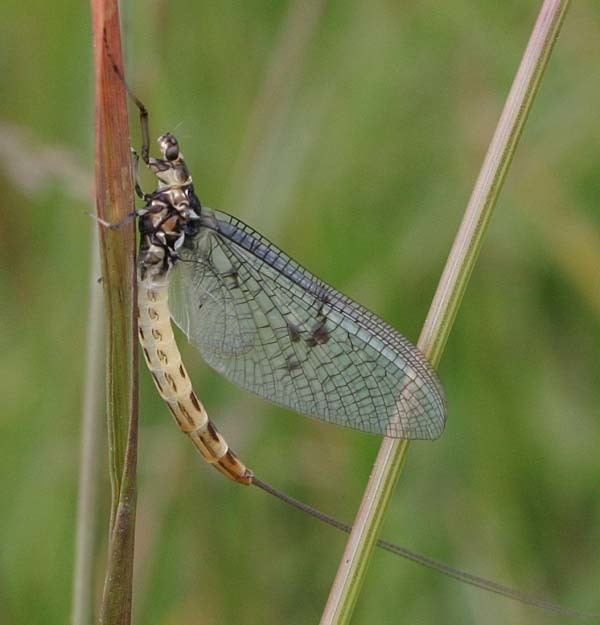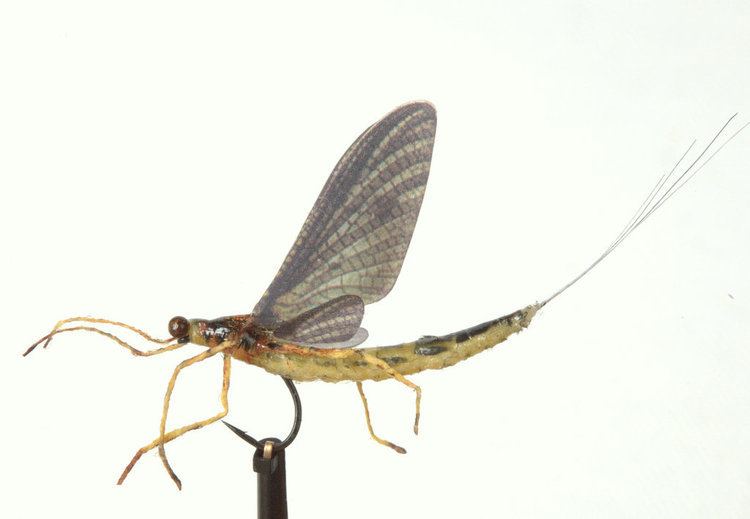Order Ephemeroptera | Rank Species | |
 | ||
Similar Mayfly, Ephemera, Ephemera vulgata, Insect, Ephemeridae | ||
Ephemera danica mayfly nymph
Ephemera danica is a species of mayfly in the genus Ephemera. The common name "green drake" is used in some parts of the British Isles for this species.
Contents
- Ephemera danica mayfly nymph
- Ed ephemera danica tied by hans weilenmann
- Description
- Life cycle
- Distribution and habitat
- References

Ed ephemera danica tied by hans weilenmann
Description

Ephemera danica can reach an imago size of 15–20 mm (0.6–0.8 in) in males, while females are larger, reaching 16–25 mm (0.6–1.0 in). This mayfly, with its characteristic markings and three tails (Cerci), is the most commonly seen of British Ephemeridae. Imago wings are translucent with dark veining, while in subimago they are dull and yellowish with brown veins. Moreover forelegs and the tails of the spinners are very much longer than in duns. Mouthparts are non-functional, as adults do not feed.

These insects are part of the aerial plankton and usually they are food for swallows, trouts and many amphibians and spiders.
Life cycle
The life cycle usually takes one or two years, but sometimes the developing nymphal forms may last for up to three years. Nymphs can reach about 30 millimetres (1.2 in) of length. They dig tunnels into the gravel in the beds of rivers and feed by filtering organic detritus. They emerge in Spring and move towards shallow waters.
The adults mainly can be found in May–June (hence the common name of mayfly), at the end of many larval stages. However adults may be often present between April and November. The lifetime of adults is very short (around four days at the most), hence its genus name (Ephemera).
Females fly on the surface of the water, dip the abdomen onto the surface and lay the eggs. At the end of this process females falls on to the surface and die.
Distribution and habitat
This species is commonly found in clear water rivers and lakes with sandy or gravel bottoms throughout Europe and the British Isles.
